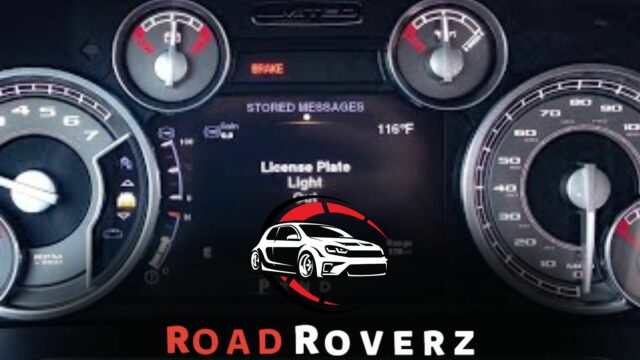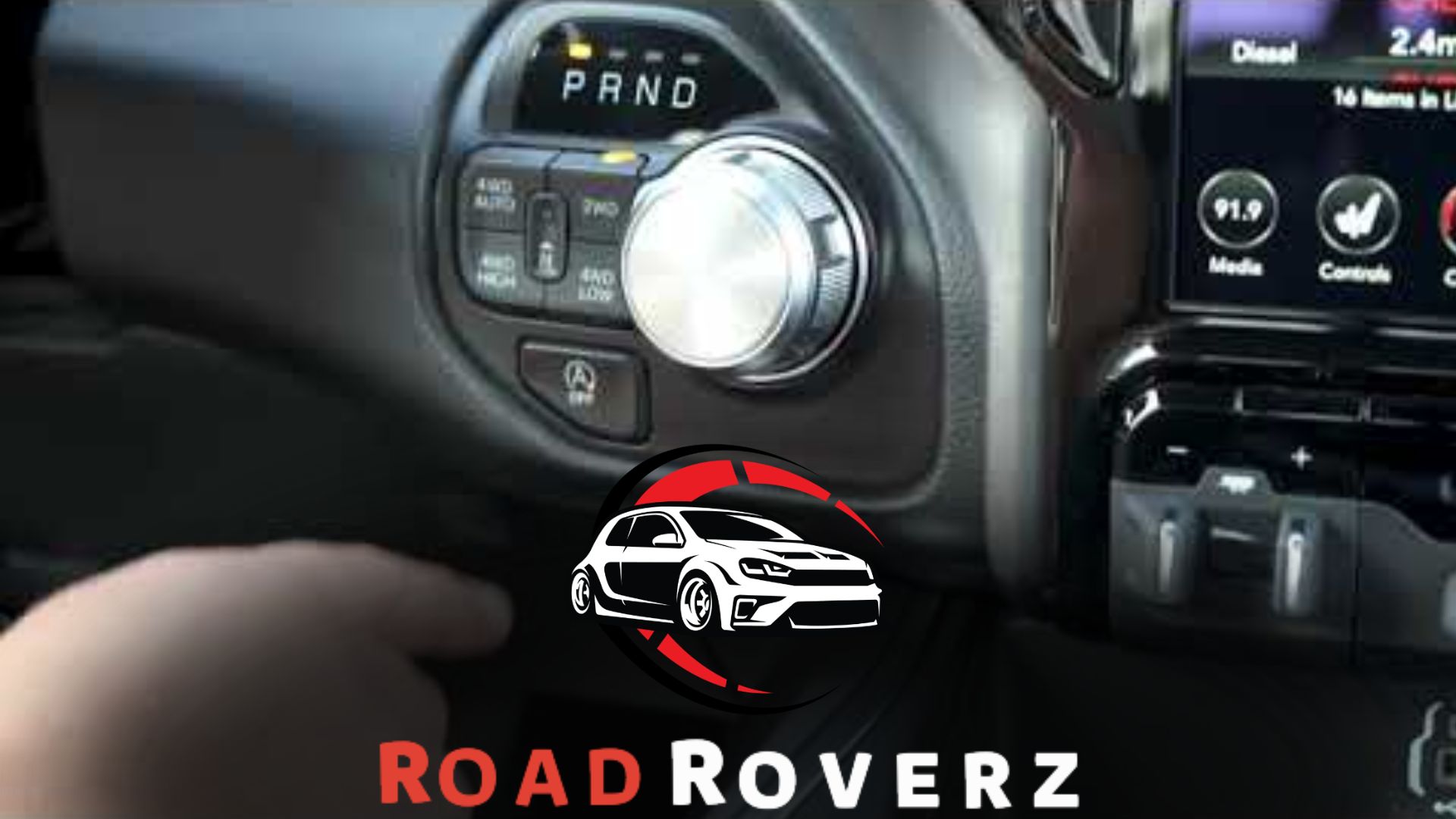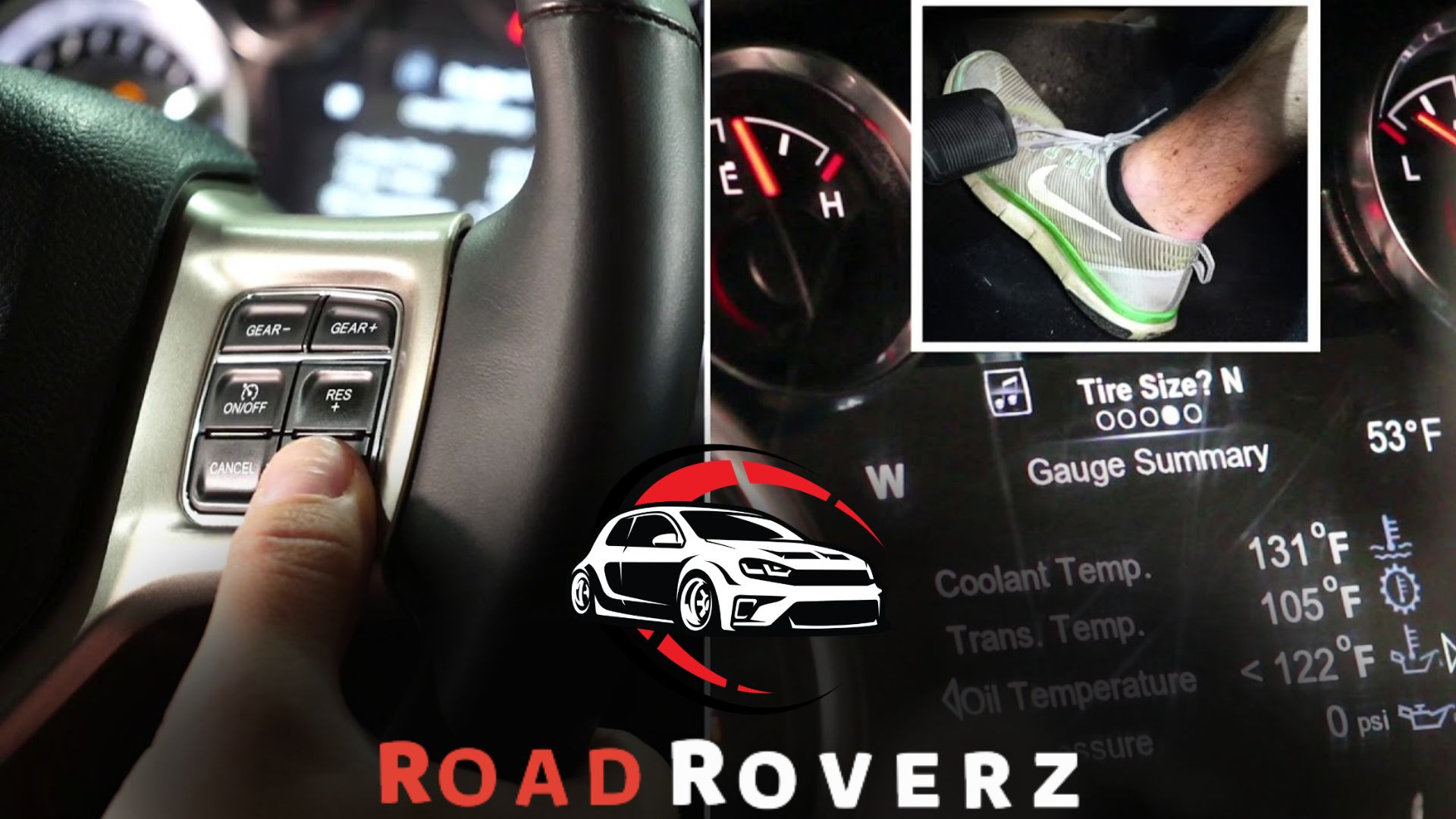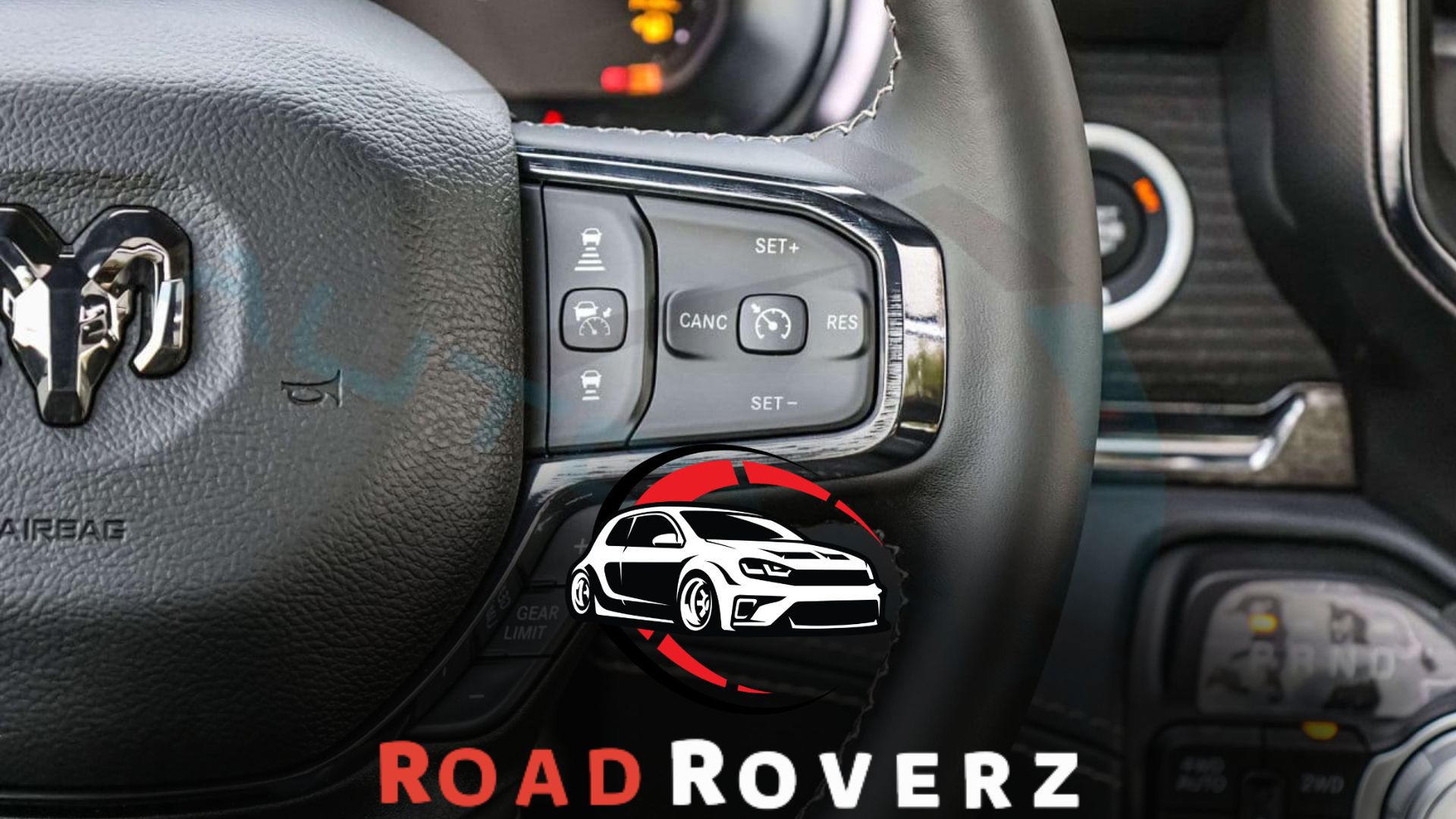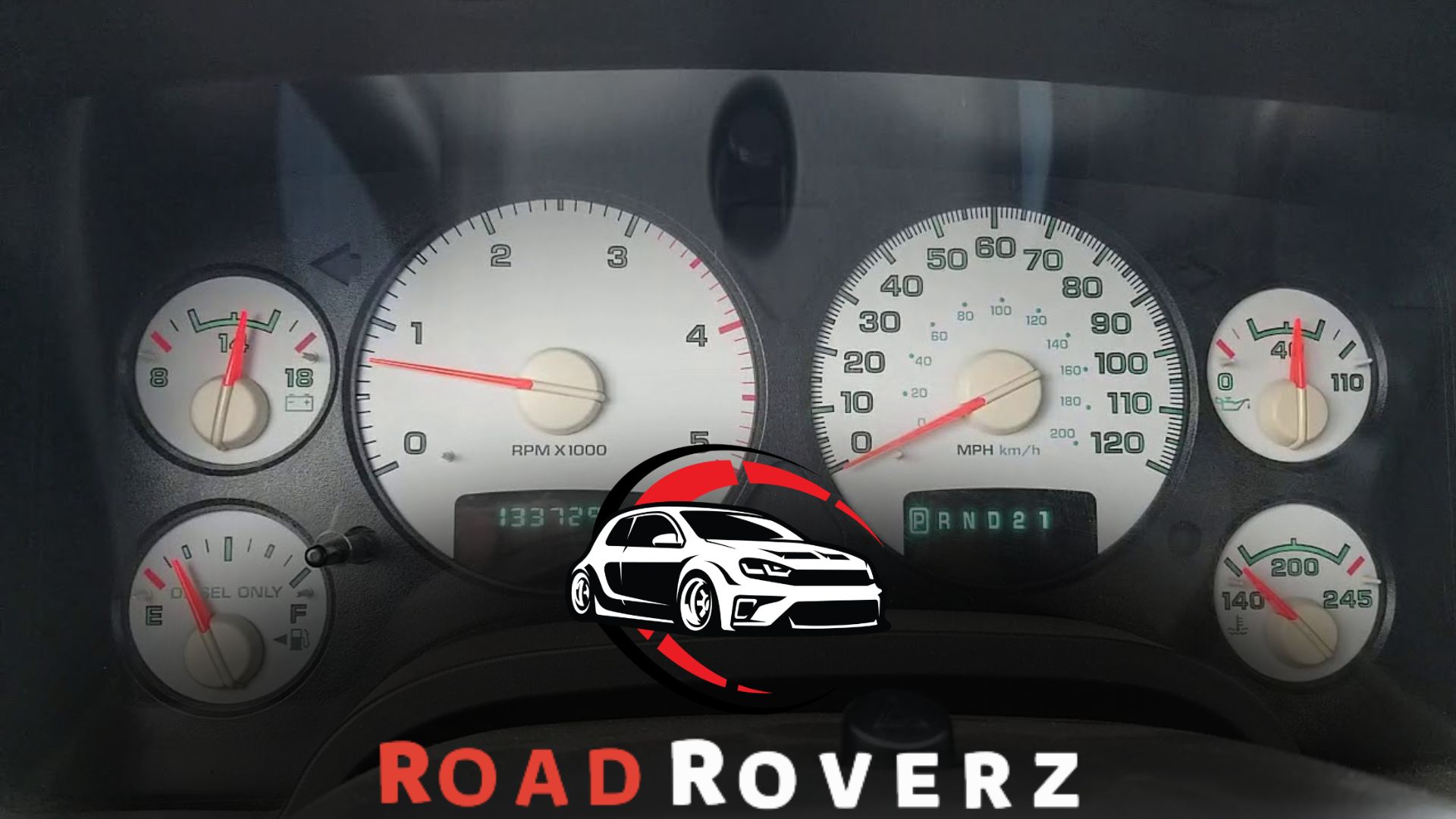To clear stored messages on a RAM 1500, access the multimedia system settings and select the “Clear Stored Messages” option. Then, confirm the deletion of the messages.
The RAM 1500 is a popular truck known for its powerful performance and advanced technology features. One of these features is the multimedia system, which allows drivers to connect their phones and access various functions.
However, the system may accumulate many stored messages over time, such as texts or voicemails.
It is important to regularly clear these stored messages from the RAM 1500’s multimedia system to maintain optimal performance and free up valuable storage space.
We will discuss clearing stored messages on a RAM 1500 in simple steps. Read on to find out more.
Understanding the Importance of Clearing Stored Messages

Understanding the importance of clearing stored messages on a Ram 1500 for optimal performance and storage management. Clearing these messages enhances the RAM’s efficiency and helps prevent potential issues or slowdowns.
Regularly clearing stored messages in your RAM 1500 is essential for maintaining optimal performance and preventing potential issues.
By taking the time to clear these messages, you can avoid a range of problems that may arise from neglecting this critical task.
This section will explore why it’s important to regularly clear stored messages and the potential issues that can occur if you overlook this maintenance task.
Why It’s Important to Clear Stored Messages in Your Ram 1500 Regularly
Clearing stored messages in your Ram 1500 has several significant benefits. These include:
- Enhancing system performance: Over time, your Ram 1500 may accumulate many stored messages, including error codes and diagnostic information. By clearing these messages regularly, you can improve the performance of your vehicle’s systems and ensure that they run smoothly.
- Prevention of reoccurring issues: Neglecting to clear stored messages can lead to lingering errors and recurring problems in your Ram 1500. By clearing these messages, you can prevent issues from resurfacing and potentially causing more significant damage to your vehicle.
- Easier troubleshooting: When faced with system malfunctions or error codes, mechanics and technicians rely on the stored messages to identify the root cause of the problem. Regularly clearing these messages ensures that the diagnostic information is current and accurate, making it easier for professionals to troubleshoot and address any issues.
- Optimal fuel efficiency: Stored messages in your Ram 1500 can affect the overall fuel efficiency of your vehicle. Clearing these messages can help maintain optimal fuel efficiency levels, saving you money at the pump and reducing your environmental impact.
- Extended lifespan: By regularly clearing stored messages, you can help prolong the lifespan of your Ram 1500. Resolving issues promptly and preventing further damage can contribute to the overall longevity of your vehicle.
Neglecting to Clear Stored Messages in Your Ram 1500 Can Lead to Various Issues
- Inaccurate diagnostics: When stored messages are not cleared, they may appear even after resolving the underlying problem. This can lead to confusion and inaccurate diagnostics during future troubleshooting.
- System malfunctions: Accumulated stored messages can result in system malfunctions, impacting various components of your Ram 1500. These malfunctions can affect critical systems such as the engine, transmission, and braking, compromising your safety and necessitating costly repairs.
- Reduced performance: Over time, stored messages can impede the performance of your vehicle’s systems. This can manifest as decreased acceleration, reduced responsiveness, or sluggish operation. Regularly clearing these messages helps maintain optimal performance levels.
- Increased fuel consumption: Unresolved stored messages can disrupt the optimal fuel-air mixture, increasing fuel consumption. This can lead to higher costs at the gas station and contribute to unnecessary environmental pollution.
- Potential damage escalation: Ignoring stored messages can escalate underlying issues, causing further damage to your Ram 1500. What may start as a minor malfunction can worsen if not addressed promptly, potentially resulting in costly repairs.
Regularly clearing stored messages in your Ram 1500 is vital for various reasons. It enhances system performance, prevents reoccurring issues, facilitates troubleshooting, improves fuel efficiency, and extends the lifespan of your vehicle.
On the other hand, neglecting to clear stored messages can lead to inaccurate diagnostics, system malfunctions, reduced performance, increased fuel consumption, and potential damage escalation.
By prioritizing this maintenance task, you can ensure your Ram 1500 operates optimally and avoid unnecessary complications.
Checking for and Identifying Stored Messages in Your Ram 1500
To clear any stored messages in your Ram 1500, you can quickly check and identify them by following these simple steps. This process ensures your vehicle’s memory is free from unnecessary messages, optimizing its performance.
How to Access the Stored Messages Feature in Your Ram 1500
The Ram 1500 is equipped with a stored messages feature to keep track of important information and alerts. Accessing these stored messages is simple and can be done directly from the driver’s display. Here’s how:
- Turn on your Ram 1500 and make sure the vehicle is in Park.
- Locate the “Settings” button on the steering wheel.
- Press the “Settings” button to enter the vehicle settings menu.
- Using the arrow buttons on the steering wheel, navigate the options until you find the “Messages” section.
- Once you’ve reached the “Messages” section, press the “OK” button to access the stored messages feature.
- You should now see a list of stored messages on the driver’s display.
Understanding the Different Types of Stored Messages and Their Meanings
Stored messages in the Ram 1500 can provide valuable information about various aspects of the vehicle’s performance and status. Understanding the different stored message types and meanings is crucial to ensure efficient maintenance and troubleshooting.
Here are the various types of stored messages you may encounter:
- Maintenance Messages: These messages inform you about the vehicle’s maintenance requirements, such as oil change reminders or tire pressure warnings. It’s essential not to ignore these messages to keep your Ram 1500 running smoothly.
- Warning Messages: Warning messages indicate potential issues that require your immediate attention. These messages can include low fuel level warnings, engine temperature warnings, or brake system alerts. Prompt action should be taken to prevent further damage when you receive a warning message.
- Informational Messages: These messages provide helpful information about various features or systems in your Ram 1500. They might include tips on using the navigation system, activating or deactivating certain functions, or adjusting vehicle settings.
- System Messages: System messages are related to the vehicle’s overall performance. They can range from notifications about the stability or traction control system to messages about the anti-lock braking system. Familiarize yourself with these messages to ensure you know of any system-related issues.
Staying on top of stored messages in your Ram 1500 is crucial to maintaining its performance, safety, and efficiency.
By understanding the different types of stored messages and their meanings, you can promptly address any necessary maintenance or repairs.
Always consult your Ram 1500 owner’s manual for more information on specific messages and their recommended actions.
To clear stored messages on a RAM 1500, start by accessing the Message Center. Follow these easy steps to quickly remove any unwanted messages from your RAM’s memory.
Locating the Message Center in Your Ram 1500
Have you ever encountered a stored message in the Message Center of your Ram 1500? Don’t worry! In this guide, we’ll walk you through the step-by-step process of accessing the Message Center and clearing those stored messages. Let’s get started!
Understanding the Different Options and Menus Available in the Message Center
Knowing how to navigate the options and menus in the Message Center will enable you to access the stored messages and take appropriate action. Here’s a breakdown of the different options and menus you’ll come across:
- Home screen: This is the main screen of the Message Center, displaying various information such as seatbelt status, fuel level, and any stored messages.
- Menu button: Located on the steering wheel, this button allows you to access the different menus within the Message Center.
- Driver information display: Positioned within your instrument cluster, the driver information display presents essential details about your vehicle’s status, including messages stored in the Message Center.
- Controls: Depending on the model of your Ram 1500, you may find different control buttons to navigate through the Message Center, such as up and down buttons or left and right buttons.
- Message list: Once you access the Message Center, you’ll see a list of stored messages. Each message typically has a brief description or notification indicating the specific issue or concern.
- Options for each message: Upon selecting a stored message from the list, you’ll be presented with various options. These options might include clearing the message, viewing more details, or dismissing the message.
By familiarizing yourself with these different options and menus in the Message Center, you’ll better understand how to navigate through and clear stored messages in your Ram 1500. Stay tuned for Step 2, where we’ll dive into clearing these messages.
Reading and Understanding Stored Messages
This process will help you quickly manage your messages and free up space on your RAM 1500.
How to Read and Interpret the Stored Messages in Your Ram 1500
If you’re facing issues with your Ram 1500, understanding the stored messages can provide valuable insights into the problem. To help you with this, follow these steps to read and interpret the stored messages in your vehicle:
- Accessing the stored messages: Connect an OBD-II scanner to your vehicle’s diagnostic port. This port is usually located under the dashboard on the driver’s side. Once the scanner is connected, turn on the ignition and allow the scanner to communicate with the vehicle’s computer.
- Navigating the scanner menu: On the scanner’s screen, navigate the menu options until you find a section related to stored messages or diagnostic trouble codes (DTCs). Select this option to view the stored messages.
- Understanding message codes: The stored messages are typically alphanumeric codes that indicate the issue your vehicle is experiencing. Each message code corresponds to a specific problem.
Understanding these codes is essential for troubleshooting
Interpreting message codes: While each vehicle model may have slightly different message codes, there are standard codes you might encounter.
Here are a few examples and their corresponding issues:
- P0300: This code indicates a random misfire in the engine, potentially caused by issues with spark plugs, ignition coils, or fuel injectors.
- C0561: This code refers to an issue with the vehicle’s stability control system. It could be due to a faulty wheel speed sensor or a problem with the control module.
- B0020: This code points to a problem with the occupant restraint system, suggesting a malfunction with the airbag system or seatbelt tensioner.
- U0140: This code indicates a communication error between various vehicle modules. It might require diagnosing the wiring or checking the control modules’ connections.
- Further troubleshooting: Once you’ve identified the message codes, it’s recommended to research each specific code to gain a more detailed understanding of the associated issue. This information will help you determine the appropriate steps to address the problem effectively.
- Seek professional assistance: If you’re unsure about the message codes or unable to resolve the issues on your own, it’s best to consult a professional technician or take your Ram 1500 to a reliable auto service center. They have the expertise and necessary tools to diagnose and fix problems accurately.
Following these steps, you can read and interpret the stored messages in your Ram 1500, empowering you to address any issues effectively or seek professional help.
Ensure you safely clear the stored messages once you’ve resolved the problems to maintain your vehicle’s optimal performance.
Clear stored messages on your Ram 1500 will help optimize your vehicle’s performance and free up memory space efficiently.
A Simple Guide to Clearing Stored Messages in Your Ram 1500
Is your Ram 1500 displaying stored messages that you want to clear? Don’t worry. We’ve got you covered with this simple guide on how to clear stored messages in your Ram 1500.
Follow the step-by-step instructions below to ensure that all messages are cleared successfully.
To Clear the Stored Messages on Your Ram 1500, Follow These Instructions
- Start by turning on your vehicle’s ignition.
- Locate the “Menu” button on your vehicle’s control panel.
- Press the “Menu” button to access the main menu options.
- Look for the “Settings” option in the menu and select it.
- Within the “Settings” menu, find and select the “Vehicle” option.
- Look for the “Stored Messages” option within the “Vehicle” menu and select it.
- You will now see a list of all the stored messages on your Ram 1500.
- To clear a specific message, navigate to that message using the arrow buttons on your control panel.
- Once you’ve selected the message you want to clear, press the “OK” button until a confirmation prompt appears.
- Confirm the deletion of the message by choosing the “Yes” option.
- Repeat the above steps for any additional messages you wish to clear.
These steps will ensure that all stored messages in your Ram 1500 are successfully cleared. Now, you can enjoy a clutter-free display and stay updated on any new messages that may come up.
Remember, maintaining a clear message center in your Ram 1500 is vital for proper communication and informing you about essential notifications or alerts.
So, take a few moments to clear the stored messages and have a seamless driving experience.
Tips for Effective Message Management
Learn how to manage your messages on the Ram 1500 effectively by clearing stored messages. Discover tips and techniques to optimize message management for a smoother experience.
Managing stored messages in your Ram 1500 can sometimes be overwhelming, but it can become a breeze with the right strategies.
This section will discuss some tips for effective message management, ensuring you never miss out on essential notifications or leave them unaddressed.
Let’s dive in and explore the best practices for preventing and managing stored messages in your Ram 1500.
Best Practices for Preventing and Managing Stored Messages in Your Ram 1500
- Prioritize message organization: To locate and address your messages promptly, organize and categorize them.
- Regularly check for new messages: Make it a habit to routinely check for any new messages to avoid build-up and ensure timely responses.
- Create folders or labels: Utilize folders or labels to sort messages based on their nature, such as critical, urgent, or general queries.
- Archive or delete irrelevant messages: Clean up your inbox by archiving or deleting no longer relevant messages or requiring no further actions.
- Utilize notification alerts: Enable alerts to receive timely updates about new messages, ensuring they don’t go unnoticed.
- Reply promptly: Address messages promptly to maintain effective communication and avoid response delays.
- Set reminders for follow-ups: For messages that require further action or follow-up, set reminders to ensure you don’t forget about them.
- Use search filters: Use search filters to quickly locate specific messages based on keywords, senders, or subject lines.
- Utilize automated responses: For routine inquiries or common scenarios, set up automatic responses to provide quick acknowledgment while personally addressing them later.
- Regularly backup essential messages: To prevent data loss and keep a record of crucial messages, regularly backup your messages to a secure location or cloud storage.
By incorporating these tips into your message management routine, you can effectively clear stored messages in your Ram 1500 and ensure that essential notifications are never missed or left unattended.
Stay organized, proactive, and responsive, making the most of your messaging system.
Frequently Asked Questions
How Do You Reset the Climate Control on a Dodge Ram 1500?
To reset the climate control on a Dodge Ram 1500, follow these steps:
- Locate the climate control buttons on the dashboard.
- Press and hold the power button for about 5 seconds.
- The climate control system will reset, and all settings will return to default.
- Adjust the temperature, fan speed, and other settings as desired.
What is the Problem With the Backup Camera on the Ram 1500?
- The backup camera on the Ram 1500 has a problem. It is not functioning correctly.
How Do I Reset My Dodge Ram 1500 Computer?
To reset the computer on your Dodge Ram 1500, follow these steps:
- Turn off the vehicle and remove the key from the ignition.
- Disconnect the negative terminal of the battery.
- Wait for about 10 minutes.
- Reconnect the negative terminal of the battery.
- Start the vehicle and allow it to idle for a few minutes.
- Note: Resetting the computer may reset specific settings and adaptations in the vehicle’s systems.
How Do You Reset the Backup Camera on a Dodge Ram 1500?
To reset the backup camera on a Dodge Ram 1500, follow these steps:
- Turn on the ignition and put the vehicle in reverse.
- Locate the settings menu on the touchscreen display.
- Look for the camera settings option and select it.
- Choose the option to reset or recalibrate the backup camera.
- Confirm the reset and wait for the camera to restart.
- Test the backup camera by shifting it into reverse to ensure it works properly.
How Do I Clear Stored Messages in Ram 1500?
To clear stored messages in Ram 1500, you can follow these simple steps:
- Locate the “Settings” option on the infotainment screen.
- Select “Phone” or “Bluetooth” settings depending on the system.
- Find the “Stored Messages” or “Message History” option and click on it.
- Choose the message you want to delete or select “Clear All” to remove all messages.
Conclusion
Clearing stored messages on your Ram 1500 is crucial in optimizing its performance and ensuring a smooth running experience.
Following the simple steps outlined in this blog post, you can effectively clear your Ram 1500’s stored messages and avoid any potential issues from cluttered memory.
Remember to back up any important messages before proceeding with the process, as it will permanently delete all stored messages.
Regularly clearing stored messages improves your Ram 1500’s performance efficiency and helps maintain its longevity.
By clearing your stored messages, you are actively contributing to keeping your Ram 1500 running at its best.

